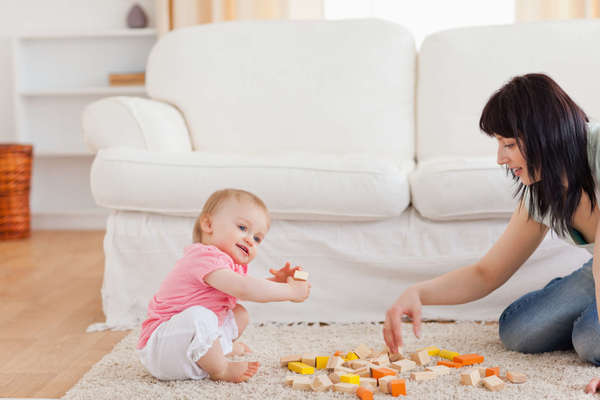
10 Educational Toys To Make Your Kid Smarter
12 Feb 2014 | 5 min Read
Baby Chakra
Author | 501 Articles
Children enjoy toys which instil in them a sense of wonder, imagination, and creativity. A cardboard box can be anything they want it to be, whereas a car is just a car! So which are these toys that stimulate a child’s mind, engage him for long hours, spark his imagination and broaden his outlook? Read on for some classic favourites that you cannot go wrong with!
1. Stacking toys:
A child can never be too young to enjoy stacking toys! Children love to stack objects, and then topple the tower over, and then start all over again! Blocks, bricks and cups can be stacked. Rings that fit on a central vertical shaft also work very well. Stacking objects involves concentration, motor skills, and the child also develops the ability to judge when the tower will topple, and so, when to stop stacking.
2. Blocks/Bricks:
Blocks are an eternal favourite, and they can be used in a variety of ways. Be they plain wooden blocks, or colourful plastic ones, blocks can be used for construction, building, stacking, clanging against each other, and a host of other ways that only children can think of! The advantage of blocks is that they can be used in different ways by the child as the she / he grows older.
3. Lego sets:
A traditional favourite, Lego sets can be used to make models of nearly anything. For an imaginative child involved in playacting, the bricks can become whatever she / he wants. Fine motor skills, creativity and imagination is kindled by lego bricks! If Lego is not available to you, locally manufactured sets of interlocking bricks are good enough. Models made of such bricks have certain stability, and hence versatility that plain flat-faced block constructions don’t have.
4. Rubik’s Cube:
The classic game involving a cube with nine stickers of a solid colour on each of the six faces. An internal turning mechanism enables each face to be turned, resulting in a mixing up of colours. The aim of the game is to bring it back to square one, making each face a single colour. Though this is more popular with slightly older children, some early-starters enjoy it when they are as young as 4-5. It involves a lot of concentration, thought, and planning.
5. Board Games like Snakes and Ladders, Ludo, Chess and Monopoly:
Help shape a child’s brain in various ways at different ages. Young children just learning to count enjoy the systematic counting that comes with Snakes and Ladders and Ludo. Chess of course, is an excellent game of concentration and strategy, whereas Monopoly helps get a sense of using money, addition and subtraction!
6. Story Dice:
Half a dozen dice, each with different pictures on its sides, is thrown, and the child makes up a story using all the pictures that are face-up. Story Dice are excellent at improving language, vocabulary, creativity and imagination, aside from being a whole lot of fun!
7. Pictionary:
The players have to convey the name of an object or a concept just by drawing pictures, and the others have to guess it. Words are not exchanged at all! Pictionary is excellent in conceptual development and lateral thinking
8. Clay modeling/Play-doh:
Play-doh or modeling clay can provide hours of fun for young minds. Little fingers can model a simple lump of clay into anything! Play-doh helps in improving spatial ability and motor skills, apart from being fun!
9. Jigsaw puzzles:
One of the best toys for children, jigsaw puzzles are available in various stages of difficulty, and in several designs. There is something for every age. Jigsaw puzzles are great at enabling a child to sit in one place for long periods. It helps improve pattern recognition, concentration, and imparts a keen sense of achievement once the picture is completed.
10. Traditional toys:
Indian traditional games are a rich source of education and entertainment. Favourites like Parcheesi/Pagade, Chaukabhaara (like Ludo), Navakankari, lion-goat game, Mancala/Aligulimane and several other board games that have come down to us through the centuries, are mini-educational kits, helping develop counting skills, planning and strategy, and concentration.
If you are in doubt about whether a game is educational or not, the thumb-rule to remember is that educational games are those that make the child think, and involves the child in some way or the other. Electronic games, or battery-operated toys are usually not in this category. There might be several great apps on your smartphones that might sound promising, and some of them might really help. Remember that the greatest learning takes place when the child is involved hands-on with the game.
Your involvement is also essential when the child plays these games. Apart from being educative and fun, these make for great bonding for the whole family!
Also read more about: Donate Your Child Unused Toys, How to keep your child entertained through toys?
A


Related Topics for you
Suggestions offered by doctors on BabyChakra are of advisory nature i.e., for educational and informational purposes only. Content posted on, created for, or compiled by BabyChakra is not intended or designed to replace your doctor's independent judgment about any symptom, condition, or the appropriateness or risks of a procedure or treatment for a given person.
